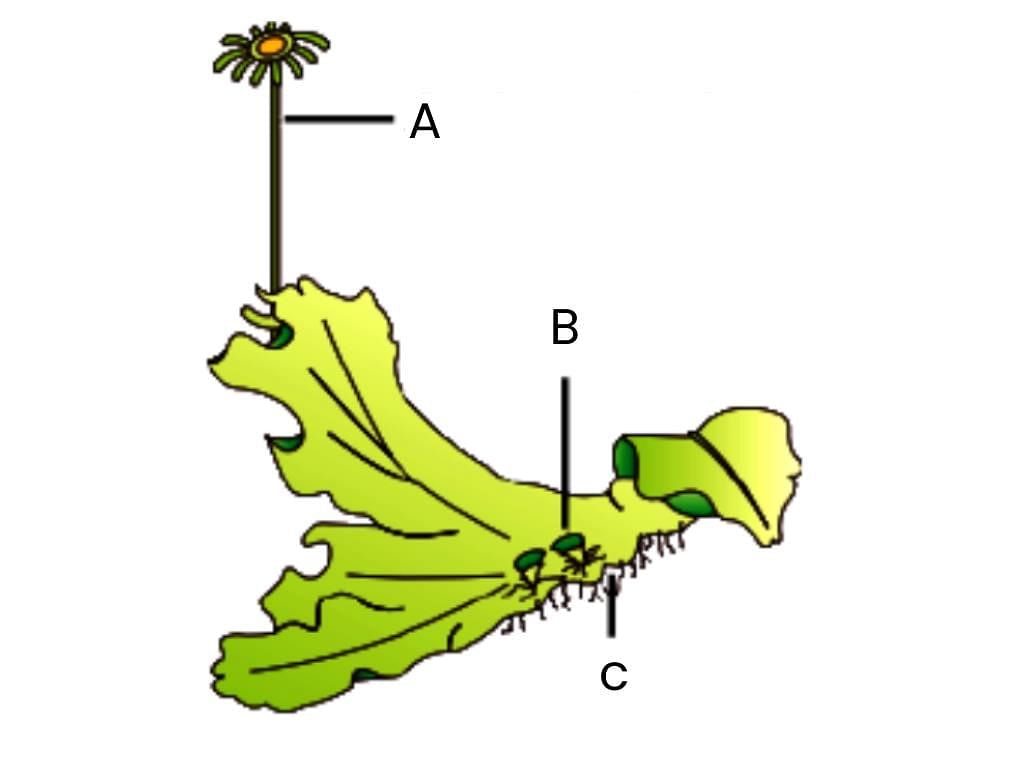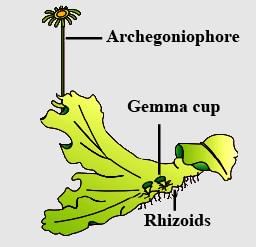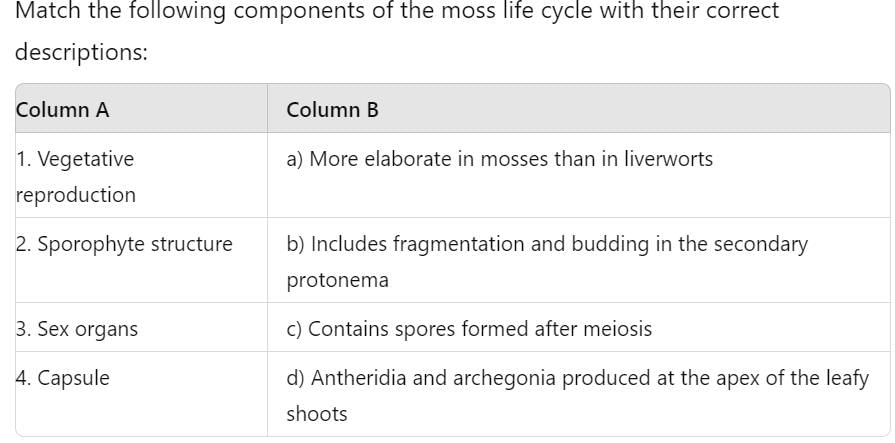15 Minute Test: Bryophytes (NCERT) - NEET MCQ
15 Questions MCQ Test - 15 Minute Test: Bryophytes (NCERT)
Select the option that correctly identifies A, B and C in the given figure of female thallus of Marchantia.


What is the predominant stage of the moss life cycle?
Consider the following statements regarding bryophytes:
I. Bryophytes are also called amphibians of the plant kingdom because they are dependent on water for sexual reproduction.
II. They play an important role in plant succession on bare rocks.
III. They lack true roots, stem or leaves.
IV. The sex organs in bryophytes are multicelluar.
V. They produce biflagellate zoospores.
VI. Archegonium is flask-shaped and produces a single egg.
The number of corrected statements is
How do mosses primarily reproduce vegetatively?
Question: Identify the incorrect statement regarding liverworts
Why are bryophytes referred to as "amphibians of the plant kingdom"?
Read the following statements about liverworts and identify the number of incorrect statements:
- The plant body of liverworts is leafy with tiny leaf-like appendages arranged in three rows on the stem-like structures.
- Liverworts are typically found growing on bark of trees and deep in the woods.
- Gemmae are green, multicellular, asexual buds that develop in gemma cups located on the thalli.
- During sexual reproduction, male and female sex organs are produced only on different thalli in liverworts.
How many of the above statements are incorrect?
Read the given statements and select the correct options.
Statement 1: Each sperm of moss has two flagella.
Statement 2: Water is essential for fertilization is mosses.
Question:
Read the following statements about the life cycle of a moss and identify the number of incorrect statements:
- The predominant stage of the life cycle of a moss is the gametophyte.
- The protonema stage is the second stage of the gametophyte, which develops from the leafy stage.
- The leafy stage develops from the secondary protonema as a lateral bud.
- The leafy stage is attached to the soil through multicellular and branched rhizoids.
How many of the above statements are incorrect?
Read the following statements and select the incorrect ones:
(a) Mosses have an elaborate mechanism of spore dispersal.
(b) In liverworts, the haploid free-living sporophyte is formed by spore germination.
(c) Vegetative reproduction in Polytrichum occurs by budding in the secondary protonema.
(d) Marchantia is a heterosporous bryophyte.
(e) Growth of bog moss ultimately fills ponds and lakes with soil
The embryonic development in bryophytes takes place in the
Read the given statements and select the correct options.
Statement 1: Bryophytes play a significant role in plant succession on bare rocks and soil.
Statement 2: They contribute to the breakdown of rocks and enrich the soil, making it more suitable for higher plants.
















